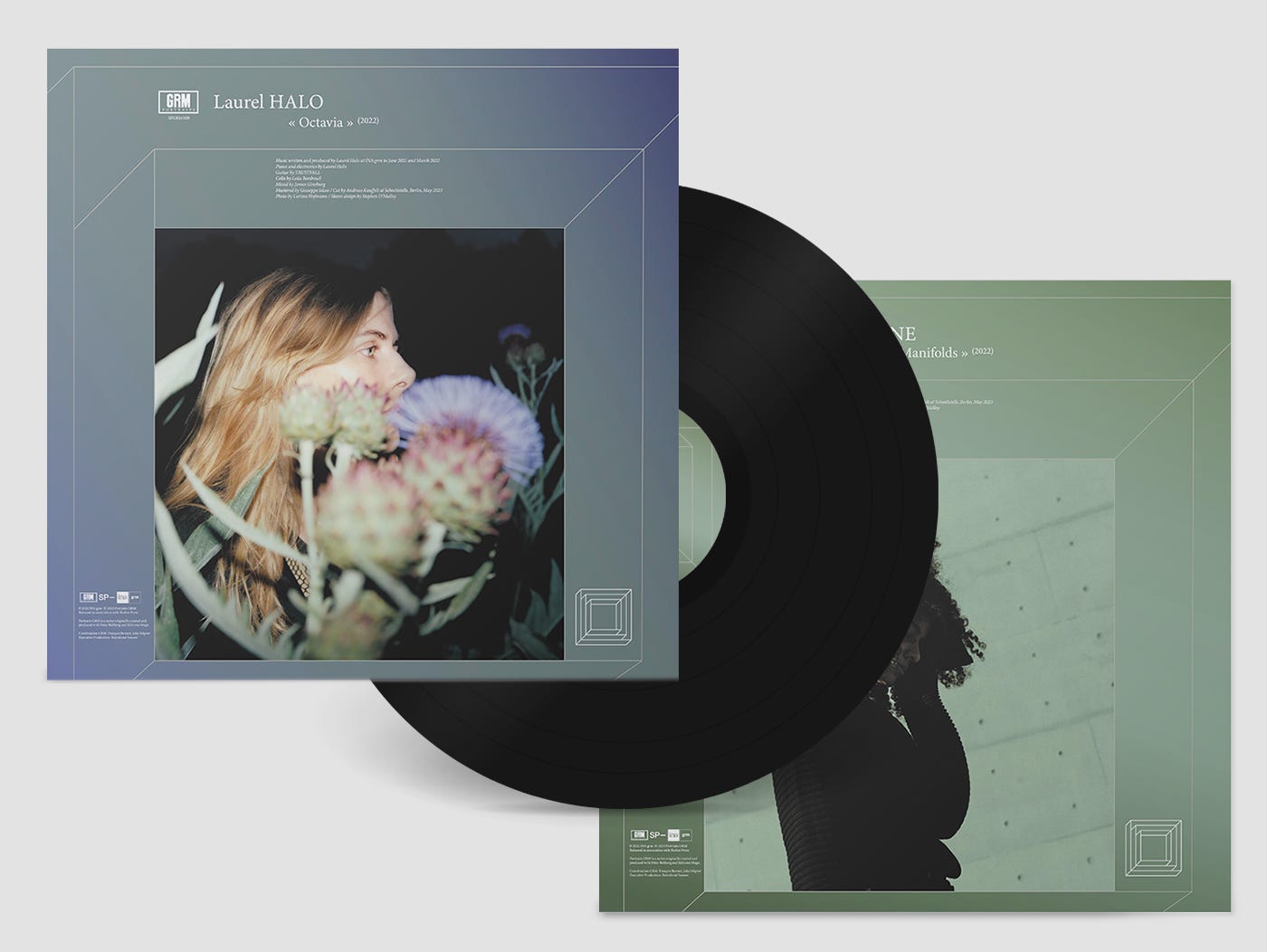OCTAVIA
↳ ‘Octavia’ (SPGRM009)
I’m so happy to share that ‘Octavia’ is out now on Portraits GRM as a split LP alongside ‘Manifolds’ by Jessica Ekomane. It was written during a residency in the subterranean studios of Ina GRM - truly an incredible experience to mutate sounds with the equipment there.
I started working on ‘Octavia’ around the same time as Atlas. In many ways there’s parallels – obscured orchestral gestures, submerged guitar and cello, some kind of smoked-out romanticism both in the chords and the overall ebb and flow of the piece. Certainly they are sisters or cousins of one another.
I was in transition during that time, and Invisible Cities was a grounding text, for whatever reason. I got stuck specifically in Octavia, the spiderweb city. Imagining melodic lines as delicate filigree or low-end drones swaying like a wind emanating from the chasm beneath. Harmonic gestures like small gardens or fires arising from the web but never staying there long. I still feel this sense of fragility, perhaps even more so now: a sense of how nothing is guaranteed and everything is subject to change, precarity and descent.
I’m grateful to Ina GRM for the invitation to record in their space. It’s an honor considering the wealth of music that’s been created there over the decades. A big thank you as well to Shelter Press for getting this record out into the world.
‘Octavia’ is available both on vinyl and digital. The vinyl version is a split with composer Jessica Ekomane’s piece ‘Manifolds’ – am honored to have this music released alongside hers.
Laurel Halo - ‘Octavia’ (21:18)
Octavia, a piece for piano and electronics, explores the relationship between melodic motifs and textures in a singular way, intermittent moments of melody, harmony and sound materials connecting and disconnecting, to indicate a series of nets or webs, swaying in and out of one another. These sonic nets gently float, spin and merge, and the effect is one of gently floating over an abyss. The work is inspired by the “spiderweb city” of the same name in Italo Calvino’s Invisible Cities: “Below there is nothing for hundreds of feet: a few clouds glide past; further down you can glimpse the chasm’s bed....Suspended over the abyss, the life of Octavia’s inhabitants is less uncertain than in other cities. They know the net will last only so long.”
Octavia, pièce pour piano et électronique, explore les rapports entre motifs mélodiques et textures d’une manière singulière, où se lient et se délient d’intermittentes mélodies, harmonies et matériaux sonores, pour évoquer une série de filets ou de toiles entremêlées. Ces rets sonores vacillent doucement, tournent et se fondent, produisant l’effet d’un léger flottement au-dessus d’un abîme. L’œuvre s’inspire de la “ville-toile d’araignée” du même nom dans Les villes invisibles d’Italo Calvino : “En dessous, il n’y a rien pendant des centaines et des centaines de mètres : un nuage circule; plus bas, on aperçoit le fond du ravin... Suspendue au-dessus de l’abîme, la vie des habitants d’Octavie est moins incertaine que dans d’autres villes. Ils savent que la résistance de leur filet a une limite.”
—François J. Bonnet, 2023
(photo by Larissa Hofmann)






